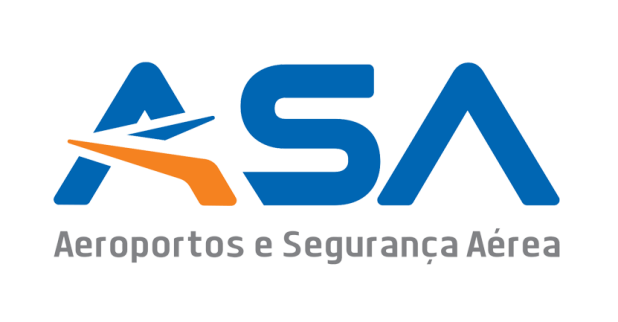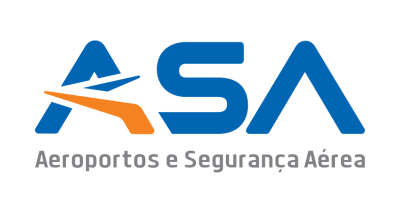




If you could change one thing about African air traffic services, what would it be and why?
If we could change one thing in African air traffic services, it would be to achieve standardisation and interoperability in Africa. This initiative would involve harmonising procedures, regulations and technologies among the various ANSPs to create a unified plan for ATM.
Standardisation is essential for enhancing safety and operational efficiency. By adopting consistent practices, we can minimise the risk of errors and improve communication between neighbouring flight information regions (FIR).
Achieving interoperability would enable seamless integration of systems and technologies, allowing for real-time data sharing and collaborative decision-making. This interoperability would enhance the performance of air traffic services.
Ultimately, these efforts would lead to more cohesive and effective coordination, improving Africa's safety standards and operational efficiency.
Do you work closely with neighbouring air navigation service providers and how can cooperation be improved in West Africa?
ASA works closely with NAV Portugal, ENAIRE (Spain), and ASECNA (Africa) to ensure seamless, harmonised, safe air traffic management across borders. Each of these ANSPs plays a crucial role in our collaborative efforts in the EUR/SAM Corridor.
We can improve cooperation in the West of Africa by enhancing data-sharing, standardising procedures and working together in training programmes. Our commitment to strengthening collaborative efforts is strong. We are mainly dedicated to addressing common challenges and improving the quality of service provided in West Africa.
By establishing and implementing a collaborative decision-making process, we would significantly enhance coordination and collaboration, improving efficiency and safety and maximising benefits for the entire West African ATM community.
What do you consider to be the biggest challenges in air traffic services in your region?
The most significant challenge in West Africa is the harmonisation of procedures across the different countries. This need for uniformity often leads to inefficiencies and complicates coordination between ANSPs, which impacts operational practices and affects safety and efficiency in ATM.
Another major challenge is the availability of adequate training and the ability to retain skilled personnel. As traffic continues to grow, it is vital to ensure that staff are well-trained and equipped with the necessary skills. However, many countries need help at attracting and retaining qualified professionals due to competitive job markets and limited resources.
Additionally, implementing a Safety Management System (SMS) is crucial in improving safety standards in Africa. This process presents significant challenges, as many ANSPs have not fully implemented a SMS. This delay hinders the ability to identify and manage safety risks systematically, which is essential for building a robust safety culture.
To address these challenges, collaboration between ANSPs and substantial investment in training is essential for advancing air traffic services and ensuring a safer and more efficient system. Programmes like Peer Review are also of great importance to overcoming those challenges.
What are the latest developments at ASA and what is your strategy to improve air traffic services in the near future?
ASA has developed an air traffic management (ATM) master plan that provides guidelines and priorities for operational concepts and communication, navigation, surveillance (CNS) infrastructure implementation.
It recently modernised the air traffic control system and transitioned from the Aeronautical Information Service (AIS) to Aeronautical Information Management (AIM) by implementing the AIXM 5.1 database. And in June 2024, ASA implemented Dynamic AIS and updated the Aeronautical Management Handling System (AMHS).
We have also recently installed a ground-based Automatic Dependent Surveillance-Broadcast (ADS-B) system to enhance surveillance capacity in the SAL Oceanic flight information region (FIR). Those projects are included in the ATM master plan to ensure the safe, efficient and sustainable provision of air navigation services in line with regional and international standards.
Our strategy for the near future is to continue modernising and digitalising our technological infrastructure, with more focus at this phase on navigation aids, such as Instrument Landing Systems, Very High Frequency Omni-Directional Range (VOR), Distance Measuring Equipment and surveillance systems. We will also invest in staff training and promote a culture of safety and innovation. Additionally, we will restructure our airspace to improve capacity and implement new operational concepts, optimising flight paths.
Will new technologies help and what do you consider to be the most important or exciting technology developments?
Technology is crucial for all competitive markets, and the aviation sector is no different. New technologies have revolutionised how air traffic control operates today. Air traffic control technology has become more critical than ever, enhancing complex processes, improving communication and surveillance and ensuring safety while increasing efficiency.
Over the years, we have seen an impressive evolution in air traffic control technology, including in radar systems, satellite technology, automation and digital communication.
The emergence of artificial intelligence (AI) is particularly noteworthy. AI has the potential to enhance operational efficiency and safety significantly. Predictive analysis powered by AI will enable controllers to foresee traffic patterns and potential congestion, allowing for proactive route optimisation to reduce delays, save fuel and reduce emissions. AI also optimises flight routes in real time, considering factors like wind and traffic volume, leading to fuel savings and reduced emissions.
However, in the near term, we think that a great game changer is the use of satellite technology. Indeed, satellites have allowed air navigation service providers (ANSPs) to implement efficient and safer flight procedures without making huge investments in ground-based navigation aids. New projects like Startical by Indra and ENAIRE, in which ASA is participating, may unlock great opportunities in air-ground communications.
How important is sustainability to your strategy and what improvements are you making in this area?
One of ASA's strategic goals is to support more sustainable aviation while maintaining high levels of safety and efficiency. We are committed to reducing our environmental impact and promoting sustainable aviation practices.
This includes implementing efficient concepts, such as Performance-Based Communication and Surveillance (PBCS), Performance-Based Navigation (PBN) and Free Route Airspace (FRA), aiming to reduce fuel consumption and emissions and contributing therefore to greener and more sustainable aviation.
ASA has implemented Area Navigation (RNAV) and Required Navigation Performance (RNP) procedures for all instrument runways in the country and implemented Continuous Climb / Descent Operations (CCO/CDO), which also help reduce aircraft noise. In the near future, to better evaluate our environmental actions, ASA will also join the CANSO GreenATM programme.



Director of Operations, ASA (Aeroportos e Segurança Aérea)
Margarett Marques de Graca




Advertisement


Director of Operations, ASA (Aeroportos e Segurança Aérea)

Margarett Marques de Graca


One of ASA's strategic goals is to support more sustainable aviation while maintaining high levels of safety and efficiency. We are committed to reducing our environmental impact and promoting sustainable aviation practices.
This includes implementing efficient concepts, such as Performance-Based Communication and Surveillance (PBCS), Performance-Based Navigation (PBN) and Free Route Airspace (FRA), aiming to reduce fuel consumption and emissions and contributing therefore to greener and more sustainable aviation.
ASA has implemented Area Navigation (RNAV) and Required Navigation Performance (RNP) procedures for all instrument runways in the country and implemented Continuous Climb / Descent Operations (CCO/CDO), which also help reduce aircraft noise. In the near future, to better evaluate our environmental actions, ASA will also join the CANSO GreenATM programme.
How important is sustainability to your strategy and what improvements are you making in this area?
Technology is crucial for all competitive markets, and the aviation sector is no different. New technologies have revolutionised how air traffic control operates today. Air traffic control technology has become more critical than ever, enhancing complex processes, improving communication and surveillance and ensuring safety while increasing efficiency.
Over the years, we have seen an impressive evolution in air traffic control technology, including in radar systems, satellite technology, automation and digital communication.
The emergence of artificial intelligence (AI) is particularly noteworthy. AI has the potential to enhance operational efficiency and safety significantly. Predictive analysis powered by AI will enable controllers to foresee traffic patterns and potential congestion, allowing for proactive route optimisation to reduce delays, save fuel and reduce emissions. AI also optimises flight routes in real time, considering factors like wind and traffic volume, leading to fuel savings and reduced emissions.
However, in the near term, we think that a great game changer is the use of satellite technology. Indeed, satellites have allowed air navigation service providers (ANSPs) to implement efficient and safer flight procedures without making huge investments in ground-based navigation aids. New projects like Startical by Indra and ENAIRE, in which ASA is participating, may unlock great opportunities in air-ground communications.
Will new technologies help and what do you consider to be the most important or exciting technology developments?
ASA has developed an air traffic management (ATM) master plan that provides guidelines and priorities for operational concepts and communication, navigation, surveillance (CNS) infrastructure implementation.
It recently modernised the air traffic control system and transitioned from the Aeronautical Information Service (AIS) to Aeronautical Information Management (AIM) by implementing the AIXM 5.1 database. And in June 2024, ASA implemented Dynamic AIS and updated the Aeronautical Management Handling System (AMHS).
We have also recently installed a ground-based Automatic Dependent Surveillance-Broadcast (ADS-B) system to enhance surveillance capacity in the SAL Oceanic flight information region (FIR). Those projects are included in the ATM master plan to ensure the safe, efficient and sustainable provision of air navigation services in line with regional and international standards.
Our strategy for the near future is to continue modernising and digitalising our technological infrastructure, with more focus at this phase on navigation aids, such as Instrument Landing Systems, Very High Frequency Omni-Directional Range (VOR), Distance Measuring Equipment and surveillance systems. We will also invest in staff training and promote a culture of safety and innovation. Additionally, we will restructure our airspace to improve capacity and implement new operational concepts, optimising flight paths.
What are the latest developments at ASA and what is your strategy to improve air traffic services in the near future?
If we could change one thing in African air traffic services, it would be to achieve standardisation and interoperability in Africa. This initiative would involve harmonising procedures, regulations and technologies among the various ANSPs to create a unified plan for ATM.
Standardisation is essential for enhancing safety and operational efficiency. By adopting consistent practices, we can minimise the risk of errors and improve communication between neighbouring flight information regions (FIR).
Achieving interoperability would enable seamless integration of systems and technologies, allowing for real-time data sharing and collaborative decision-making. This interoperability would enhance the performance of air traffic services.
Ultimately, these efforts would lead to more cohesive and effective coordination, improving Africa's safety standards and operational efficiency.
If you could change one thing about African air traffic services, what would it be and why?
ASA works closely with NAV Portugal, ENAIRE (Spain), and ASECNA (Africa) to ensure seamless, harmonised, safe air traffic management across borders. Each of these ANSPs plays a crucial role in our collaborative efforts in the EUR/SAM Corridor.
We can improve cooperation in the West of Africa by enhancing data-sharing, standardising procedures and working together in training programmes. Our commitment to strengthening collaborative efforts is strong. We are mainly dedicated to addressing common challenges and improving the quality of service provided in West Africa.
By establishing and implementing a collaborative decision-making process, we would significantly enhance coordination and collaboration, improving efficiency and safety and maximising benefits for the entire West African ATM community.
Do you work closely with neighbouring air navigation service providers and how can cooperation be improved in West Africa?
The most significant challenge in West Africa is the harmonisation of procedures across the different countries. This need for uniformity often leads to inefficiencies and complicates coordination between ANSPs, which impacts operational practices and affects safety and efficiency in ATM.
Another major challenge is the availability of adequate training and the ability to retain skilled personnel. As traffic continues to grow, it is vital to ensure that staff are well-trained and equipped with the necessary skills. However, many countries need help at attracting and retaining qualified professionals due to competitive job markets and limited resources.
Additionally, implementing a Safety Management System (SMS) is crucial in improving safety standards in Africa. This process presents significant challenges, as many ANSPs have not fully implemented a SMS. This delay hinders the ability to identify and manage safety risks systematically, which is essential for building a robust safety culture.
To address these challenges, collaboration between ANSPs and substantial investment in training is essential for advancing air traffic services and ensuring a safer and more efficient system. Programmes like Peer Review are also of great importance to overcoming those challenges.
What do you consider to be the biggest challenges in air traffic services in your region?